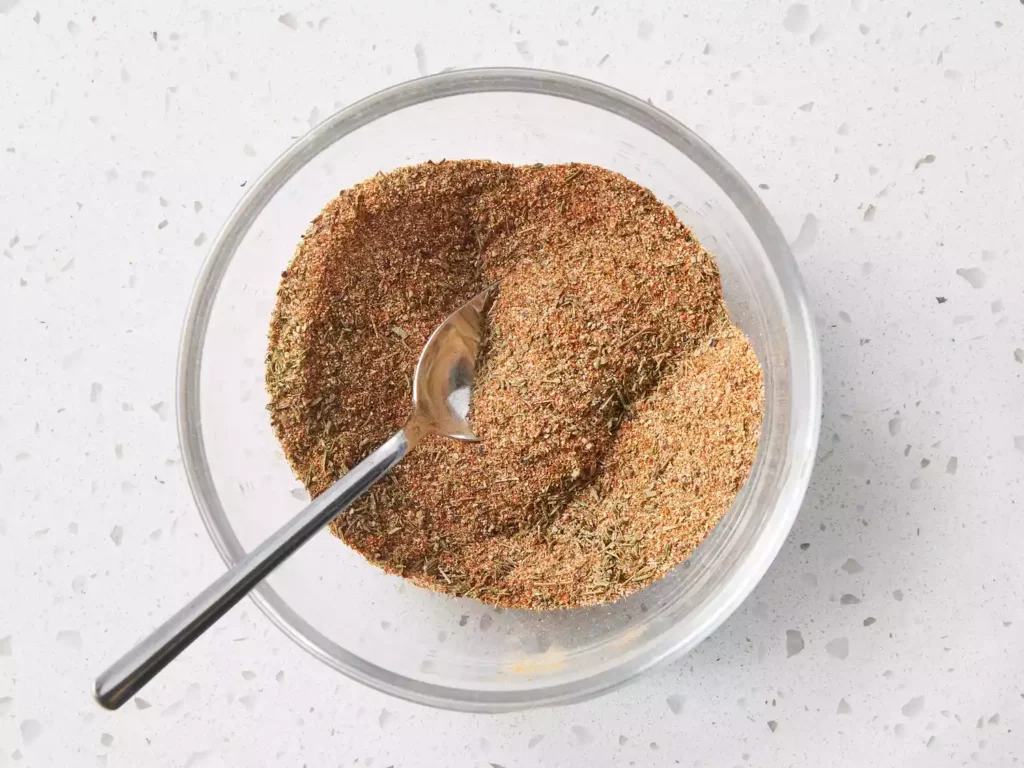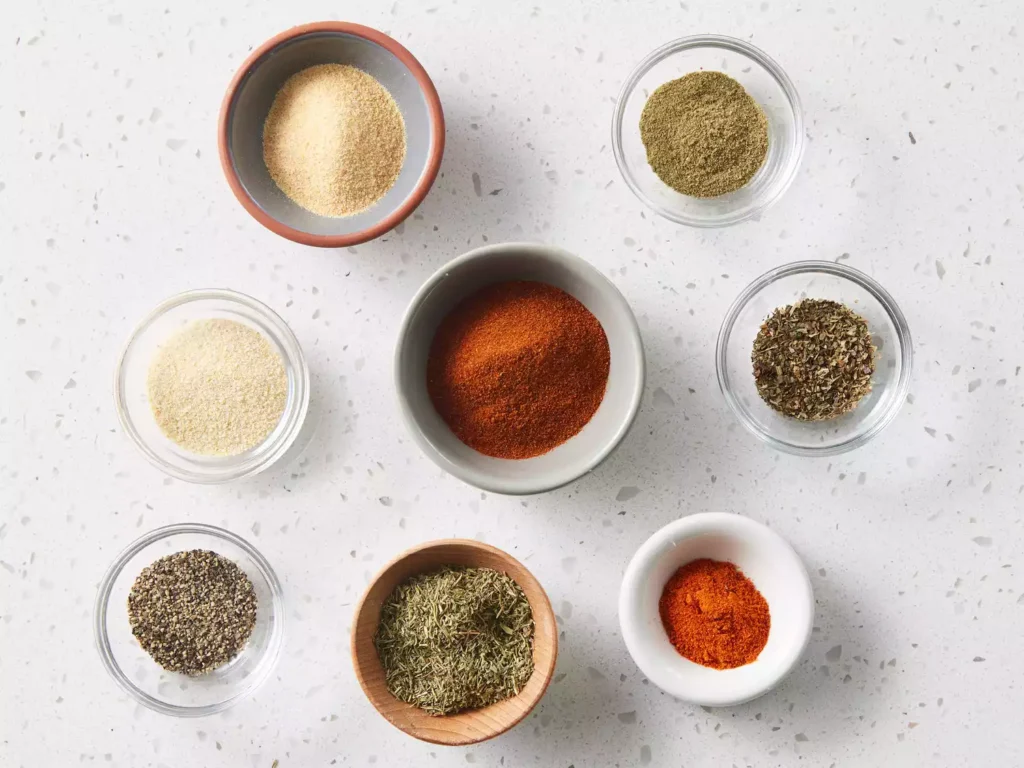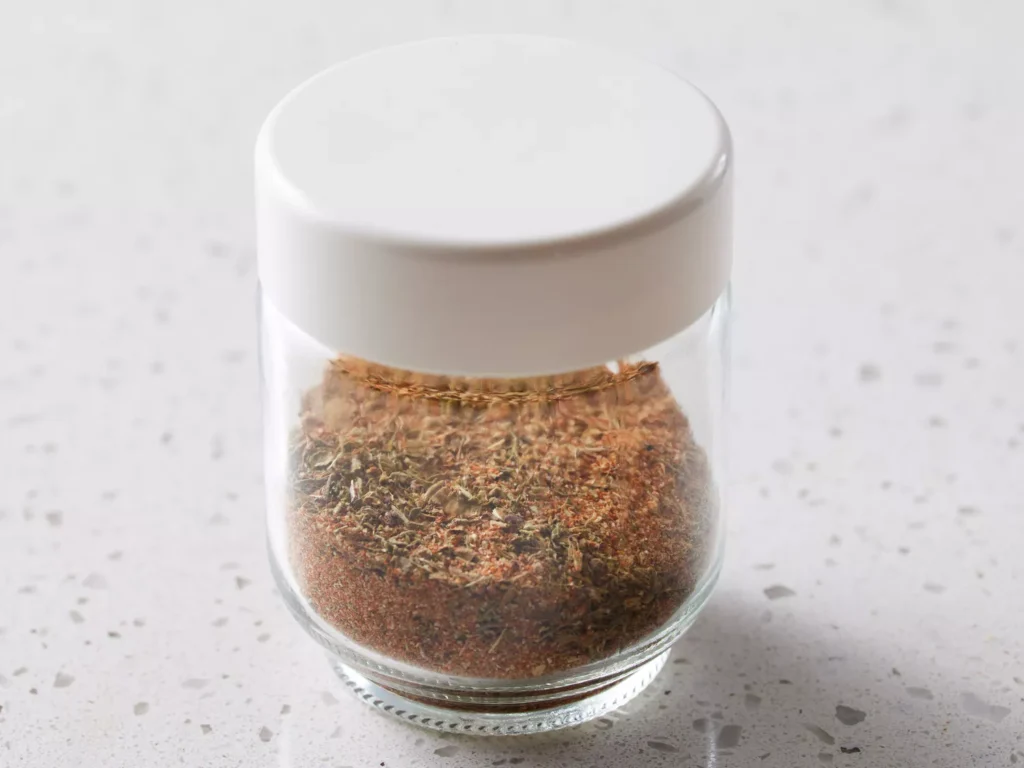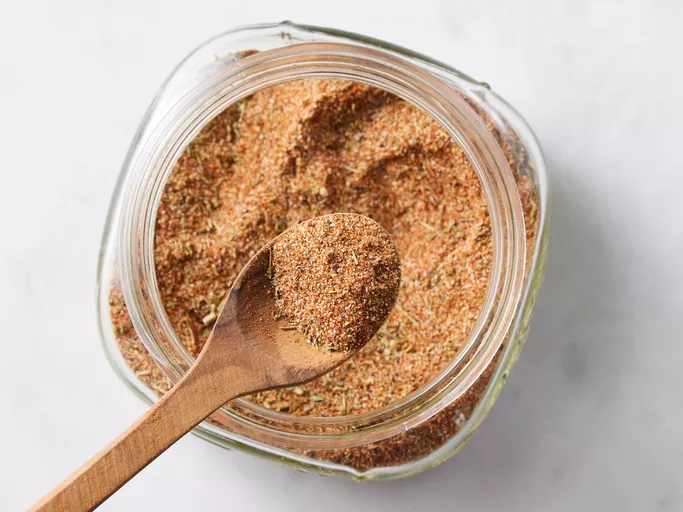Prep time: 5 mins.
Return: Regarding 1/3 mug spices mix (enough for 6– 8 portions).
Life span: Approximately 6 months in impermeable container.
Why You’ll Love This Blackened Spices Recipe.

Neglect store-bought blends and weak, generic blends. This blackened spices is bold, personalized, and designed for high-heat food preparation that delivers that signature smoky, charred crust on meat or fish.
Whether you’re blackening hen, shrimp, tofu, or portobellos, this mix brings the perfect harmony of warmth, depth, and herby punch– without subduing your recipe.
Quick Reality: “Blackening” is a food preparation approach, not just a taste! It refers to searing food in a super-hot cast iron skillet with butter and flavor rub up until a savory dark crust kinds.
Ingredients (with Benefits)

| Spice | Purpose |
| 2 tablespoon smoked paprika | Adds warmth, deepness, and smoky undertones |
| 1 tbsp garlic powder | Sharpens the mix and enhances savory notes |
| 1 tbsp onion powder | Adds mild sweetness and umami splendor. |
| tsp dried oregano | Brings Mediterranean herbaceousness |
| 1½ tsp dried thyme | Earthy base note for complexity |
| 1 tsp cayenne pepper | The spicy kick! (adjust to taste) |
| 1 tsp black pepper | Bites back with classic sharpness |
| 1 tsp sea salt (optional) | Balances and binds flavors |
| ½ tsp cumin (optional) | Adds earthy, smoky depth |
| ¼ tsp smoked ghost pepper (optional) | For daredevils who like serious heat |
All components are cupboard staples. No MSG, no anti-caking agents– just pure, vibrant taste.
Guidelines: Make Your Own Blackening Magic.
- Mix all the spices in a little dish. Use a whisk or spoon to blend uniformly.
- Taste-test the mix before storing– adjust cayenne or salt to fit your warm preference.
- Store in a glass spice container or closed container in a cool, dry place.
Pro Pointer: Let your blend “bloom” for 1 day in the container prior to very first usage. This enhances taste combination!
How to Make Use Of Blackened Seasoning.

- Preparation protein: Rub meat or fish completely dry. Brush with dissolved butter or olive oil.
- Generously coat: Sprinkle blackened flavoring on all sides.
- Burn hot: Utilize a smoking-hot cast iron frying pan (no non-stick!). Burn for 2– 4 minutes per side until you get a rich, dark crust.
- Finish: Offer quickly with lemon wedges or cooling sides.
Works perfectly with:
- Chicken thighs or breasts
- Salmon, cod, or mahi-mahi.
- Shrimp or scallops.
- Tofu or cauliflower steaks.
Variations to Try
| Goal | Swap |
| Smokier flavor | Use chipotle powder as opposed to cayenne. |
| Salt-free diet | Omit salt completely; flavor stays strong. |
| Kid-friendly | Reduce cayenne to 1/2 tsp or swap for sweet paprika. |
| More herbal | Add 1/2 tsp dried parsley or sage. |
Storage & Shelf Life

- Best by: 6 months.
- Keep in: Airtight glass jar.
- Stay clear of: Light, dampness, and warmth.
✅ Tag your jar with a name and day for simple kitchen area organization.
Commonly Asked Questions (FAQs)
Blackened seasoning is a blend of bold, savory spices and herbs traditionally used in Cajun and Creole cooking. The classic mix includes paprika, garlic powder, onion powder, cayenne pepper, black pepper, thyme, and oregano, with optional additions like cumin, basil, or smoked salt. Some recipes include smoked paprika for deeper flavor or ghost pepper for extra heat. It’s designed to withstand high-heat cooking and create a flavorful crust on meats, seafood, or veggies.
Not exactly. Blackened seasoning and Cajun seasoning share many ingredients, but they’re slightly different in flavor profile:
Cajun seasoning is often spicier and saltier, with a rustic feel and sometimes includes white pepper or celery seed.
Blackened seasoning focuses more on a balance of herbs and heat, and is typically used as a crust-forming rub for high-heat searing.
Both are flavorful, but blackened seasoning is specifically tailored for the blackening cooking method.
Yes, but not overwhelmingly so. Most blackened seasoning blends contain cayenne pepper, which gives it a moderate heat level. If you’re sensitive to spice, you can reduce the cayenne or substitute with sweet paprika. On the flip side, for more heat, you can add chipotle powder, crushed red pepper, or ghost pepper. The spice level is very easy to customize to your taste.
Blackened seasoning has a bold, smoky, and slightly spicy flavor, with deep herbal notes. The paprika brings warmth and a mild sweetness, cayenne adds heat, and garlic/onion powder provide a rich, savory base. The dried herbs like thyme and oregano bring earthy complexity, making it a well-rounded blend that pairs well with nearly any protein or vegetable.
Absolutely! While it’s traditionally used on fish and chicken, blackened seasoning is fantastic on:
– Cauliflower steaks
– Roasted sweet potatoes
– Zucchini and squash
– Grilled mushrooms
– Corn on the cob
Just toss your vegetables in a little oil and coat them with the seasoning before roasting or grilling. It adds a deep, smoky flavor and makes veggies far more exciting.
Store blackened seasoning in an airtight container or glass spice jar in a cool, dry, and dark place, such as a pantry or spice drawer. Avoid exposure to moisture or direct sunlight. When stored properly, it will stay fresh and flavorful for up to 6 months. For best results, make small batches and label with the date.
No, “blackened” does not mean burnt. It refers to the dark, flavorful crust that forms when food is coated in seasoning and seared in a hot cast iron skillet, usually with butter or oil. The high heat causes the spices to caramelize and darken, creating a savory crust that is rich, not bitter. Properly blackened food should taste smoky and spicy, not charred.
Yes, blackened seasoning is often made without salt so you can control the sodium level, especially if you’re cooking for someone with dietary restrictions. Simply omit the salt in the recipe, then season your dish with salt to taste after cooking. Many chefs actually prefer this method because it offers more flexibility depending on the dish or protein you’re using.
